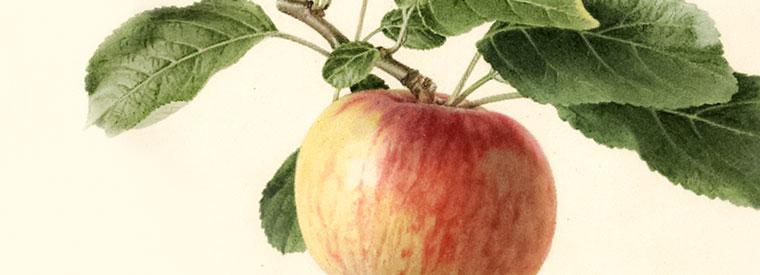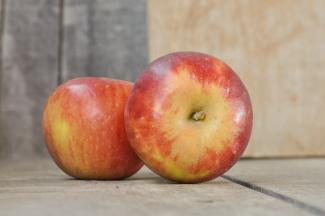"Humanity will be renewed in the Orchard, and the Orchard will restore it."

Fruit
WINESAP is also named American Wine Sop, Banana, Hendrick's Sweet, Holland's Red Winter, Pot Pie Apple, Potpie, Red Sweet Wine Sop, Royal Red of Kentucky, Texan Red, Winter Winesap and Refugee. There are dozens of strains, including the Virginia Winesap, a darker sport, found at the Garland Orchards in Troutville, Virginia, in 1922, and marketed by Stark Brothers. Winesap was first described as a cider fruit by Dr. James Mease in Philadelphia in 1804, and in 1817, William Coxe illustrated and described it in A View of the Cultivation of Fruit Trees. It was known during the colonial period in Virginia, and Coxe wrote of it as popular for cider making in New Jersey, but there is no documentation at this time of its place of origin. Small to medium in size and round to oblong in shape, the skin is a deep-red or maroon in color with the yellow background showing on the shaded side. Indistinct flushes and stripes of a darker red, and sometimes a netting of russet, overlay the lighter red. The yellow flesh is sweet, crisp, and aromatic, with a vinous flavor. The seeds are brown, short and ovate in shape. Small, folded and oval in shape, the leaves are a medium to round and dull. The new growth bark is a dark-red with few lenticels. A dependable bearer, it produces heavy crops annually and is suitable for cooking, dessert and cider making. The blossoms of the Winesap are pink instead of the white of most varieties. An exceptional keeper, it ripens in Virginia in October.
Winesap is a triploid variety, and will need two different varieties to pollinate it.
Ripening Period
- Mid Fall - October
Other Features
- Pollen Sterile
- Stores well


